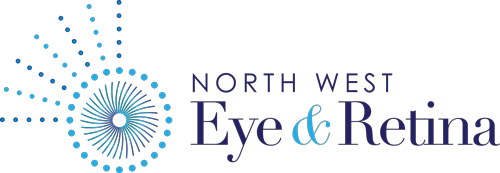Diabetic Eye Disease
What is diabetic eye disease?
Everyone with diabetes is at risk of diabetes-related visual loss and blindness.
Diabetes is a complex disease characterised by high levels of blood glucose (sugar). Over time, elevated blood glucose levels can affect many parts of your body and damage your blood vessels. Damage to the blood vessels in the retina is called diabetic retinopathy, which may lead to vision loss if not treated.
The severity of diabetic eye disease is greatly influenced by how well blood sugar levels are controlled, as well as blood pressure and cholesterol levels.

Conditions we treat
Diabetic Retinopathy
Early stages of diabetic retinopathy (DR) may not have any visual symptoms, but once symptoms occur, vision loss may develop quickly. Symptoms include:
Blurred or distorted vision
Dark spots, shadows, floaters, or gaps in your vision
Flashes of light in your peripheral (side) vision
Frequent changes to your glasses prescription
Diabetic macular oedema
Diabetic macular oedema (DMO) is a form of diabetic eye disease that can occur at any stage. It occurs when fluid accumulates in the macula, which can lead to blurred central vision and therefore difficulty with reading and driving.
Non-proliferative diabetic retinopathy (NPDR)
NPDR is the early stage of DR and may not cause any symptoms. However, the weakened blood vessels may leak fluid or become blocked over time, leading to blurred vision. NPDR may also progress to proliferative diabetic retinopathy.
Proliferative diabetic retinopathy (PDR)
PDR is the more advanced stage of DR and occurs when reduced oxygen supply to the retina triggers the release of vascular endothelial growth factor (VEGF). This causes fragile new blood vessels to grow on the retinal surface (neovascularisation) where they may break and bleed into the back of the eye. With progression, this process can cause scar tissue, which may pull on the retina, causing it to detach. PDR may therefore lead to severe permanent vision loss if not addressed urgently.
Treatment for diabetic eye disease
Treatment will depend upon the type and severity of diabetic eye disease, but may include laser treatment, intravitreal injections, or vitrectomy surgery.
Laser treatment (Panretinal photocoagulation; PRP) reduces oxygen demand on the peripheral retina, decreasing VEGF production and abnormal growth of blood vessels.
Intravitreal injections of anti-VEGF medications are frequently used to treat both diabetic macular oedema and PDR. These injections can stabilise or improve vision, but often need to be repeated.
Vitrectomy may be needed to treat bleeding into the vitreous (vitreous haemorrhage), high risk PDR, or retinal detachment as a result of PDR.
How long does it take to recover from treatment?
Laser treatment is performed in the clinic and most patients tolerate treatment well. As drops are needed to dilate your pupils prior to treatment, you will not be able to drive after the procedure for a few hours. The same applies if you are having intravitreal injections.
If you are having a vitrectomy procedure, this is undertaken as day surgery. Recovery usually takes 2 to 3 weeks. If you have air or gas in your eye after a vitrectomy, you will not be able to drive, fly, or ascend to high altitudes until after the gas completely disappears.
“Before having any eye surgery, we will need to carefully review your diabetes mediations, including any tablets and insulin, so please bring these along to your appointment.”

Eye specialists in Brisbane
Comprehensive care for the whole eye

